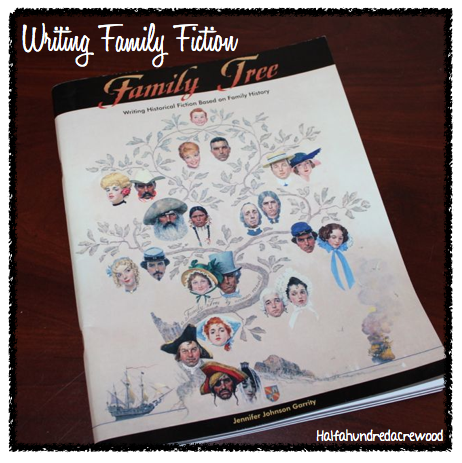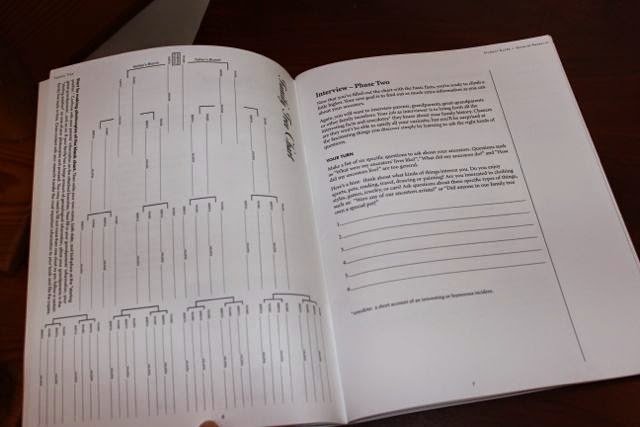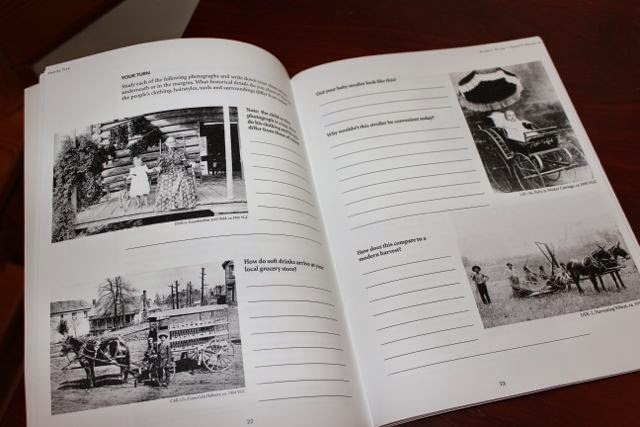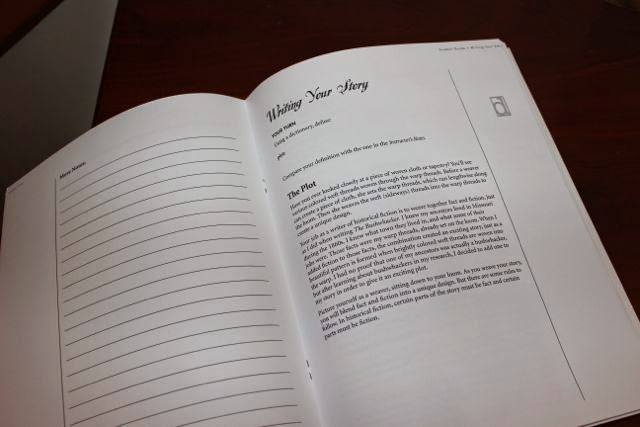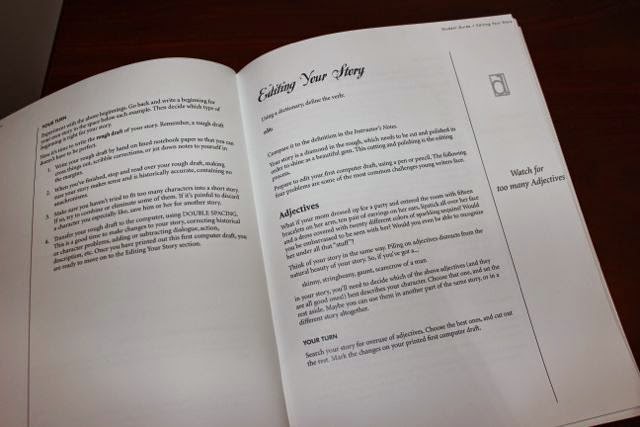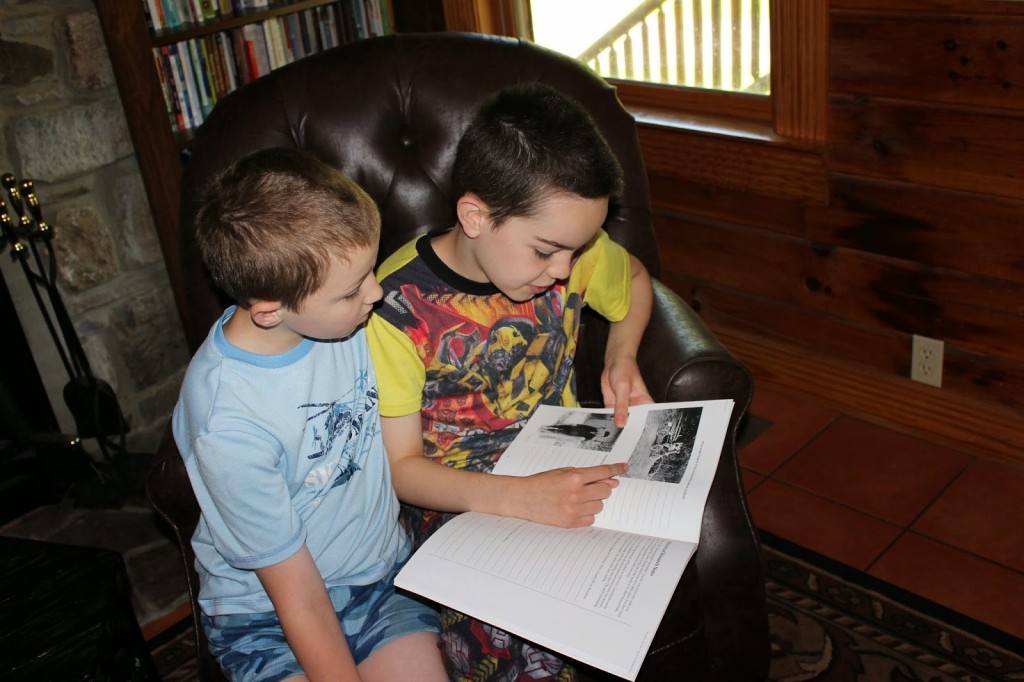“…every student has a built-in treasure trove of inspiration for historical fiction: ancestors.” (Family Fiction, p. 1)
Have you ever thought about writing historical fiction based on your family history? Though genealogy is fascinating, I’d never thought about using it as a writing tool for our family!
Family Fiction: Writing Historical Fiction Based on Family History is a 76-page writing guide that introduces students and instructors to the process of writing historical fiction by providing inspiration for doing so: our unique ancestry. The author takes us through the process of writing a story by providing an example of how a specific work of historical fiction was pieced together. Students are led through the act of gathering historical facts, weaving those facts with fiction to create a plot, and refining that content to fashion a family tale to be cherished across generations. The overarching goal of the workbook is for the student to take joy in writing fiction while “developing content and providing techniques for maturing a student’s writing style.”
Recommended for ages 10 through high school (and even adult!), this guide contains a suggested schedule, tips, and grading guidelines and includes student and instructor checklists for research, writing, and editing. It assumes a student’s prior understanding of the basics of sentence and paragraph construction.
The guide is divided into the following sections:
Introduction: The introduction starts with a bit of the “grammar” of historical fiction by defining terms used in research and writing within this genre and includes a brainstorming activity for students to see how authors produce an idea for a story.
General Research: This section takes young writers through the initial interview process and includes a Family Tree Chart and guidelines for making a questionnaire. After formulating questions for the interview based on the student’s interests, he/she can compare to a list of interview questions which are included in the guide. (This is great for those who don’t know where to start!)
Specific Research: Here the student chooses which ancestor to focus on based upon his own interests. As he starts with foundational facts about a person and builds upward, the guide continues to focus on the definition of fact and fiction as it details how to be a “trustworthy guide” for the time period by using accurate historical settings, names, and events. (e.g., After the student is introduced to anachronism, he learns how to avoid it in writing historical fiction.) The guide explains how to dig deeper into research using census records, archives, and other research tools such as encyclopedias, documentaries, family photos, and topographical maps. Specific exercises in examining photographs and recording observations are included, along with a template for recording historical research notes.
Writing Your Story: In historical fiction, certain parts must be fact and certain parts can be fiction. The workbook takes students through the elements of a story to explain what must be fact, fiction, or either. It provides details on how to incorporate the facts into the story (as you “write a story, not a report”) and includes examples on how to begin a story in an engaging way.
Editing Your Story: This section explains the use of adjectives, adverbs (on weak verbs vs. strong verbs), passive language vs. direct action, and a variety of sentence starters. A student checklist aids the editing process.
Instructor’s Notes with Answer & Instructor’s Checklist:
This section includes specific recommendations and resources for the instructor, an answer key, an instructor’s checklist, and a list of historical novels you may want to have your student read before attempting to write a work of historical fiction.
Andrea’s Homeschool Tips: A veteran homeschool mom provides specific tips for using this guide with reluctant or inexperienced writers age 10-13. Also included are a schedule for completing the project in 26 school days, a grading guide, how to organize a Family Tree Binder, how to adapt the assignments for different age levels, and ideas for enhancing the project.
Family Fiction is designed to supplement any writing curriculum, and the writing project can be completed in four to ten weeks. (Summer writing project, anyone?) Because the guide is self-directed for the high school student, the workbook design is consumable, but families are granted permission to make copies for multiple children and projects within the immediate family.
What I think
This is one of the most exciting writing assignments we could ever pursue as a family and would be an engaging way to keep our writing skills honed through the summer. In fact, as soon as I showed it to our 10-year-old, who is a reluctant, non-enthusiastic writer, he asked if he could get started right away!
This resource is one I would like for all of our children (and myself!) to complete as their writing skills mature. As with many of Brimwood Press’s products, it’s one we can revisit multiple times with the same child as he matures in his writing and interests. Imagine how many cherished family heirlooms we could collect throughout the years, and how much more we could learn about history – and our own family!
To download a sample of Family Fiction, click here, and to purchase, click here.
If you are interested in simple products to use for exploring history and/or worldview with your family, be sure to visit the following links:
What about Worldview?
Calendar Quest: 5,000 Years of History in 16 Lessons
History through the Summer… and Beyond
Understanding Centuries with a Toothpick Timeline
Conversations from the Garden
Christian Theology and Ancient Polytheism: Study for the Dialectic
We received this product in exchange for a review. The opinions expressed herein are my own and have not been influenced by any outside source. This post contains affiliate links. To find out why we use affiliate links, I encourage you to read our disclosure policy. Thank you for supporting our family’s website and homeschooling endeavors!

